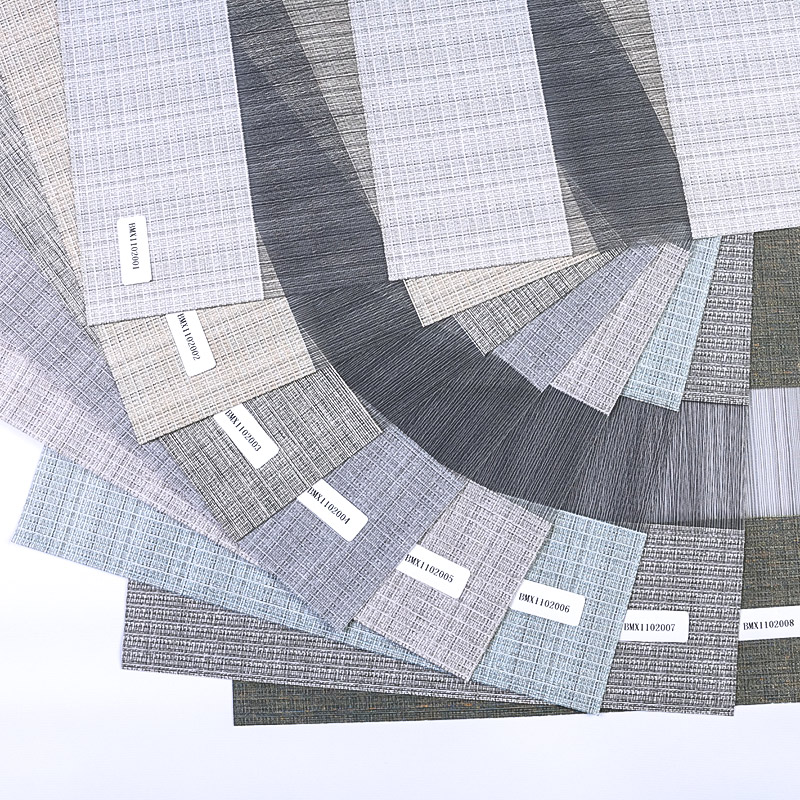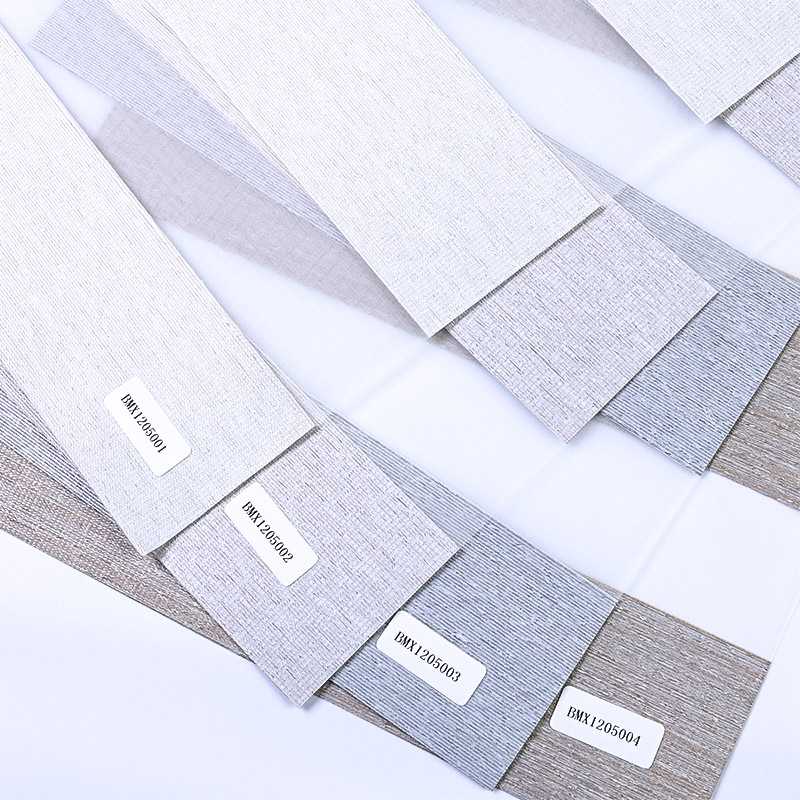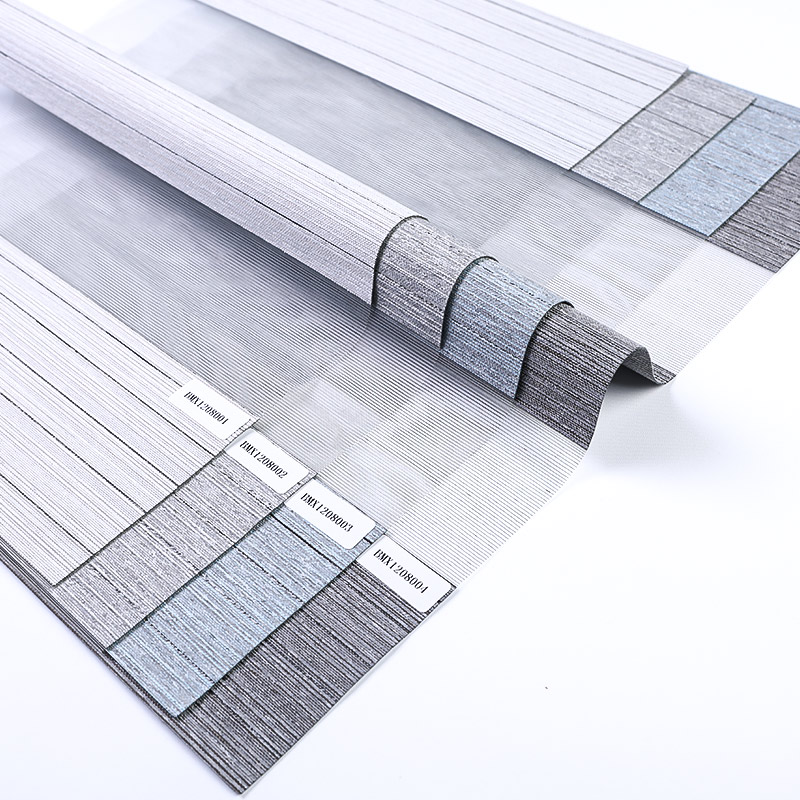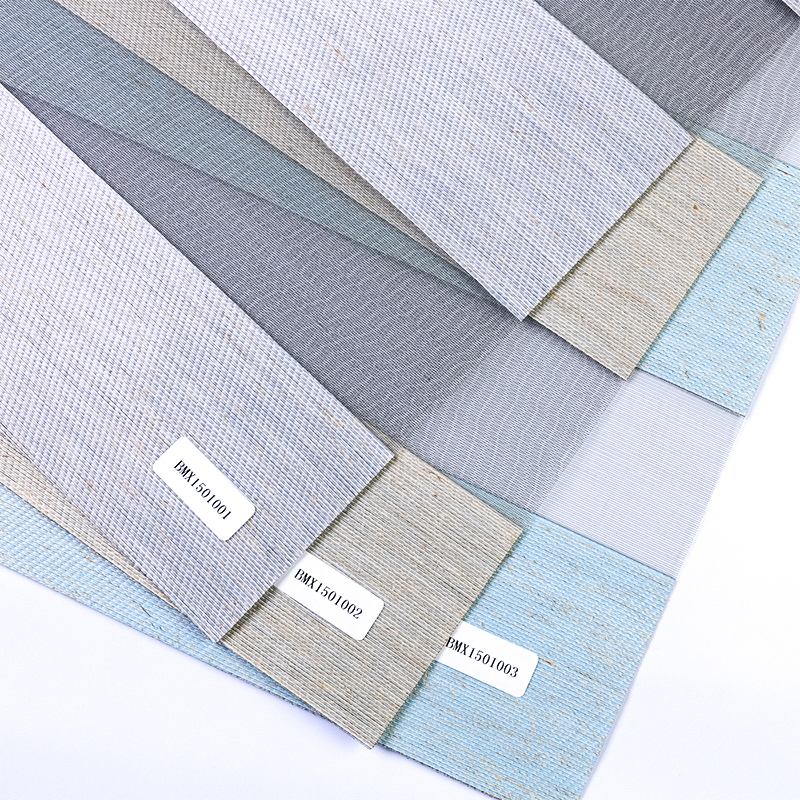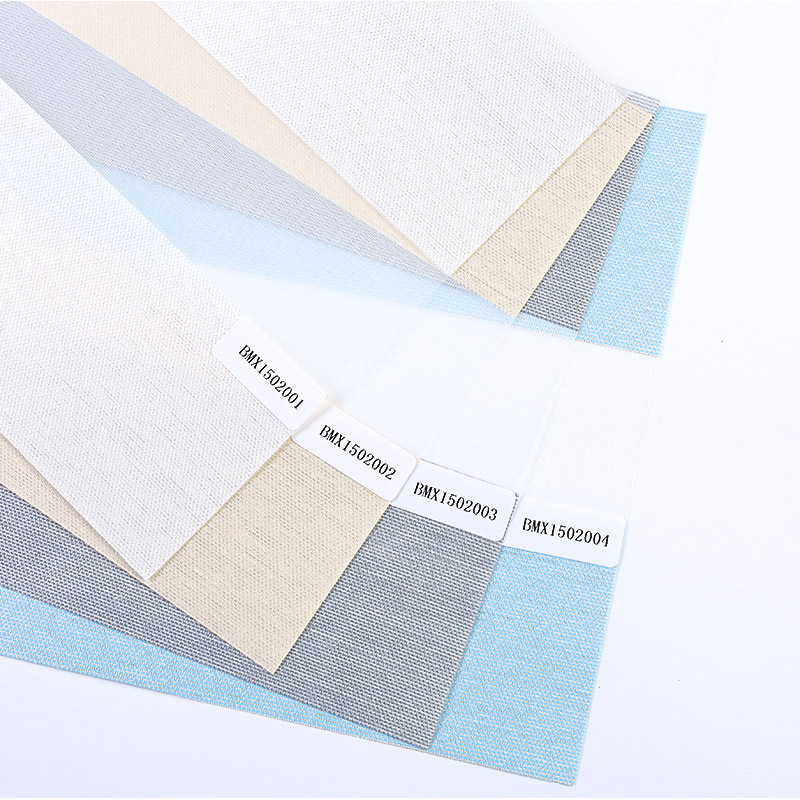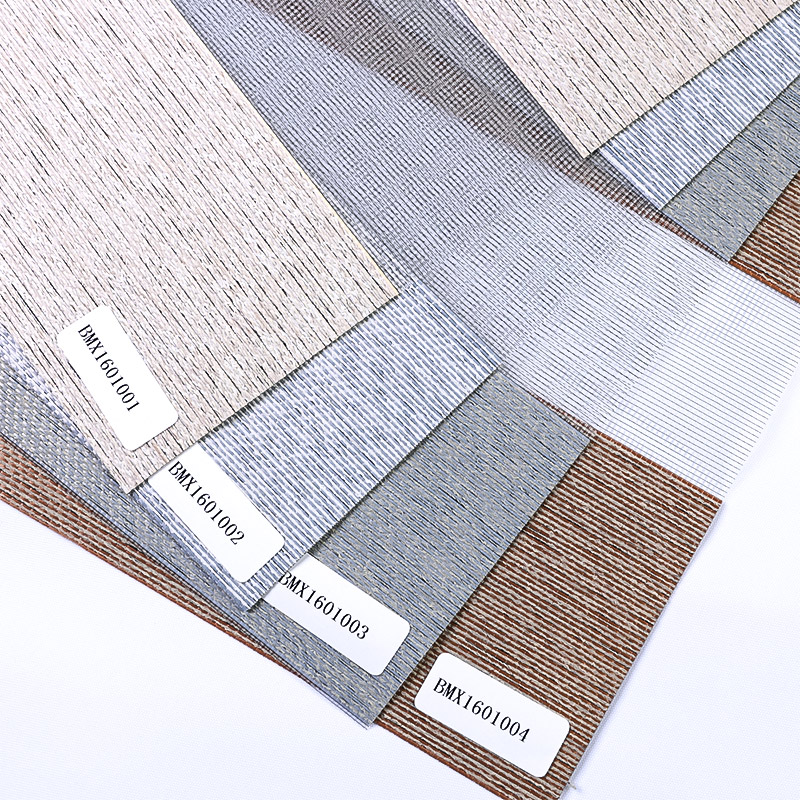Blackout fabrics for roller blinds are designed to resist fading and UV damage over time through several key mechanisms and features:
1.UV Stabilizers: Blackout fabrics are often enhanced with UV stabilizers during the manufacturing process. UV stabilizers are chemical additives that absorb or deflect harmful ultraviolet (UV) rays from the sun. By incorporating these stabilizers into the fabric composition, manufacturers ensure that the fabric is less susceptible to UV-induced degradation, including fading.
2.Coatings: Some blackout fabrics feature specialized UV-resistant coatings on their surfaces. These coatings act as a protective barrier, effectively reflecting or absorbing UV radiation. As a result, the UV rays are prevented from penetrating the fabric and causing fading or damage to interior furnishings.
3.Dye and Pigment Quality: The choice of dyes and pigments used in the coloring process of blackout fabrics is critical to their resistance to fading. High-quality dyes and pigments exhibit superior lightfastness, which means they are less prone to fading when exposed to UV light over time.
4.Fabric Thickness and Density: The thickness and density of the blackout fabric play a significant role in its ability to block UV rays. Fabrics with a higher thread count or a tightly woven structure provide greater UV protection. These dense fabrics limit the penetration of UV radiation, thus reducing the potential for fading.
5.Colorfastness: Manufacturers subject blackout fabrics to colorfastness tests to assess their ability to maintain color vibrancy when exposed to environmental stressors, including UV light. Fabrics that meet stringent colorfastness standards are less likely to fade, ensuring long-lasting aesthetic appeal.
6.Anti-Reflective Backing: To further mitigate UV damage, some blackout fabrics incorporate an anti-reflective backing on the side that faces the window. This specialized backing reduces the reflection of UV rays into the interior space, providing an extra layer of protection against fading.
7.Window Treatments: Proper installation and usage of roller blinds or window treatments are crucial for UV protection. Keeping the roller blinds fully closed during peak sunlight hours minimizes UV exposure to the fabric. Combining roller blinds with additional window coverings, such as curtains or drapes, can create a multi-layered defense against UV damage.
8.Regular Cleaning and Maintenance: Dust and debris can accumulate on blackout fabrics, potentially accelerating deterioration and fading. Regular cleaning and maintenance routines, including gentle vacuuming or wiping with a damp cloth, help to preserve the fabric's appearance and UV resistance over time.
9.Positioning and Usage: The positioning and usage of roller blinds are factors that impact UV exposure. Avoiding prolonged direct sunlight exposure by adjusting the blinds can significantly extend the life of the fabric. Employing window treatments strategically can further reduce UV intrusion.
10.Quality of Fabric: Selecting high-quality blackout fabric from reputable manufacturers is fundamental to long-term UV resistance. Well-constructed fabrics with robust UV resistance properties inherently possess greater durability and are better equipped to withstand the effects of UV radiation.
The resilience of blackout fabrics against fading and UV damage is achieved through a combination of material composition, coatings, and thoughtful design. These factors collectively contribute to the fabric's ability to maintain its appearance and protect interior spaces from the adverse effects of UV exposure. Proper care and maintenance, along with prudent usage, are essential for maximizing the lifespan of blackout fabrics in roller blinds.
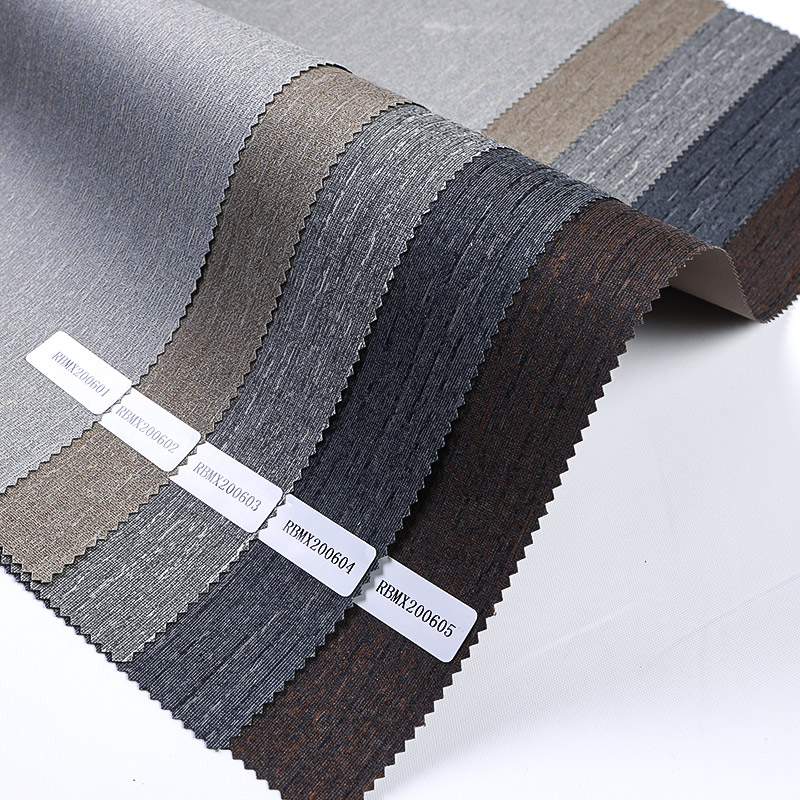

Use window: French Window
Opening and closing method: Upper and Lower Biparting Open
Installation method: Ceiling Installation, Exterior Installation, Side Installation, built-in
Size: Wide Blade


 EN
EN  英语
英语 中文简体
中文简体